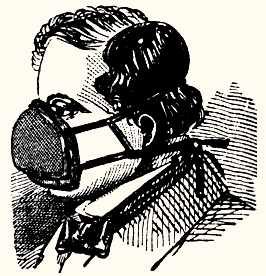 |
| Spraying Water to Keep Dust Levels Down Will Become Common Place |
Table 1 tasks involve exposures to respirable crystalline silica when the following tools are used on concrete, brick, block, stone, mortar, and other materials that contain crystalline silica:
- Stationary masonry saws;
- Handheld power saws;
- Handheld power saws for cutting fiber-cement board;
- Walk-behind saws;
- Drivable saws;
- Rig-mounted core saws or drills;
- Handheld and stand-mounted drills (including impact and rotary hammer drills);
- Dowel drilling rigs;
- Vehicle-mounted drilling rigs;
- Jackhammers and handheld powered chipping tools;
- Handheld grinders for mortar removal (i.e., tuckpointing);
- Handheld grinders for uses other than mortar removal;
- Walk-behind milling machines and floor grinders;
- Small drivable milling machines;
- Large drivable milling machines;
- Crushing machines; and
- Heavy equipment and utility vehicles when used to abrade or fracture silica containing materials (i.e., hoe-ramming or rock ripping) or used during demolition activities; and
- Heavy equipment and utility vehicles when used for tasks such as grading and excavating.
 |
| Doing tasks in this manner, we hope will be a thing of the past! |
 |
| Wearing A Respirator, Adds Significant Costs for Silica Projects |
If your exposure control plan requires respirator, then you must meet the requirements of the respirator standard 1910.134, see our blog post regarding the directive which tells you how this standard would be enforced. This standard would require a medical evaluation of workers to ensure they can wear a respirator, annual respirator fit testing, and annual training on the use of the respirator. Respirator standard would also require a written program and the designation of a competent person to administer the written program. In addition, the silica standard would require you provide a medical exam, specifically for silica, if workers use respirators for 30 days or more in a calendar year. This medical would be required every 3 years. The medical must include:
- medical & work history;
- chest x-ray;
- pulmonary function test;
- physical exam focused on the respiratory system; and
- testing for latent tuberculosis infection.
After all of the above, the final steps in compliance is maintaining the records, in accordance with 1910.1020, and updating the plans on an annual basis. 1910.1020 standard requires that exposure records be maintained for 30 years from the date of creation and medical records be maintained for duration of employment plus 30 years.
 |
| More Projects Will Look Something Like This |
Based on the above information, we think it is pretty obvious that you want to eliminate tasks that involve the use of respirators or reduce the amount time a worker does a task that might require a respirator. Doing so eliminates the need for the silica medical exam and all the requirements under the respirator standard. The long term costs involved with meeting the requirements for using a respirator (silica medical exam & respirator standard requirements), we think would outweigh the cost of improving equipment used by workers to meet the requirements of Table 1 for each of the tasks. We have added some silica courses to our schedule to help you comply with the new standard. Visit our website for more information. Happy New Year and Be Safe!























